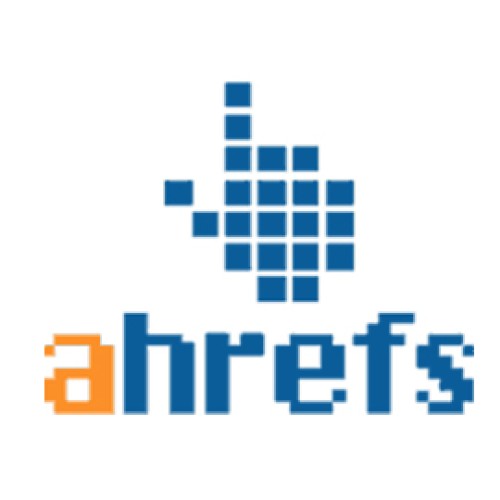You can almost hear the collective sigh that ripples through a company when a new hire starts remotely: HR fires off forms, IT ships devices, managers ping-chat welcomes. Yet in the background, someone usually you has to prove every single policy box was ticked before the new employee even remembered their Wi-Fi password. The glossy onboarding PDFs look harmless in a shared drive, but auditors treat them like radioactive material: if a signature is missing, the whole organization glows red.
I learned that the hard way. Four hundred laptops, eight time zones, and a stack of signed PDFs so thick it warped the file server’s backup window. After one midnight Slack from Legal (“Do we have proof Mary P. acknowledged the data-handling clause on her first day?”) I decided sleep was the next endangered resource. What follows is the playbook I used to reclaim it an end-to-end pipeline that ingests every signed form, cross-checks it against Scalefusion’s dynamic groups, and lights up a Grafana panel any time something slips.
The Hidden Cost of Paper Comfort Blankets
Printed manuals died a decade ago, but PDFs inherited their throne because they feel “official.” You can scroll them, sign them, and forget them precisely the problem. Each onboarding packet contains at least six acknowledgments: security, privacy, acceptable use, code of conduct, harassment training, and sometimes a local flavor like “snow-day reporting.” Multiply that by hundreds of hires and you’re nursing a compliance haystack with a few crucial needles, even as industry guides on digital-first onboarding practices argue that workflow-driven tools beat static PDFs.
Here’s the real rub: most forms arrive in bursts. When Finance finishes tax season, they dump every new W-9 at once. HR interns scan in wet-ink NDA pages on the last Friday of the month. The cadence is chaotic, yet auditors demand a single, chronological trail. Every lapse morphs into a potential fine, and when regulators come knocking, they wield magnifying glasses, not good faith.
Imagine lining up dominoes across a football field. One shaky table leg or one missing initial topples the lot. The cost isn’t just regulatory; it’s cultural. Employees grow cynical if they’re asked to re-sign forms they already completed, and managers lose confidence in IT’s invisible guardianship. So, ditching the “PDF as archive” mindset was step one. Treat each document like a live data packet instead of a static artifact, and the cost curve bends sharply downward.
Why Signed PDFs Are a Compliance Minefield
PDFs promise universality, but in practice they’re as standardized as snowflakes. The moment someone saves their form from Preview on macOS, another from Bluebeam on Windows, and a third from a random browser plug-in, your onboarding packets mutate. Field names drift, signature layers flatten, and checkboxes turn into mysterious Unicode blocks. Now your parser has to be equal parts diplomat and detective.
Auditors, however, are blissfully indifferent to these quirks. They want proof that onboarding tasks were completed on day one, full stop. That means your system must answer three non-negotiable questions:
Was the right form used?
Was every mandatory field filled?
Was the employee’s digital signature valid?
Standards keep shifting; even DocuSign’s evolving e-signature standards prove that “universal” formats continue to mutate once they hit real-world pressure.
A single yes-on-paper-no-in-system mismatch can trigger a full forensic review. Worse, the traditional “eyeball the PDF” approach scales linearly with headcount, while remote hiring often scales exponentially. Unless you plan to triple your compliance staff, you need to weaponize automation.
Some teams attempt to store metadata inside SharePoint or Google Drive labels, but those tags live outside the document. The moment someone downloads, renames, or re-uploads a file, the metadata evaporates like morning mist. Instead, I focused on pulling the facts out of the PDF itself and marrying them to Scalefusion’s device tags. That pivot let us spot problems where they mattered: at the intersection of people and their laptops.
Building the Pipeline: From Inbox to Dashboard
The pipeline begins at an innocuous shared mailbox, think onboarding-forms@company.com. Each attachment lands in an S3 bucket via a serverless rule, triggering a Lambda that extracts raw text. A wave of intelligent document-processing startups demonstrates that structured insight can be mined from even the messiest PDFs, so I leaned on PDF data extraction with Python to keep the codebase compact and dependency-light.
Once the text is in memory, a matcher compares form titles against an allow-list: “Code of Conduct 2023,” “Security Policy v2,” and so on. If the title strays, the document gets shunted to a quarantine folder and Slack pings me for manual review. That simple gate eliminates countless false positives from misrouted invoices or cat photos that well-meaning recruiters attach by accident.
Next, a signature validator inspects AcroFields for cryptographic locks. If the signature field is missing or worse, present but empty Grafana fires a bright red alert. For my sanity (and to avoid dawn patrol), I set quiet hours; the system downgrades alerts to email during nights and weekends, bundling them into a morning digest.
Finally, I tag the device in Scalefusion with a “Forms-Complete” label, enabling a compliance dynamic group that enforces full disk encryption and email profile rollout. The feedback loop seals itself: if the script misses something, the laptop loses privileges, sounding an unmistakable alarm.
Surviving Inconsistent PDFs: Regex, Fallbacks, and Graceful Failures
Even robust libraries choke on malformed documents, so the pipeline needed a safety net. Before diving into the nastier edge cases, let me set the scene. Picture a snow globe: you shake it, and glittering flakes swirl unpredictably, yet eventually they settle into a pattern. Parsing PDFs feels similar; chaos ends in order if you build enough guardrails.
A short buffer paragraph before our sub-section, so we avoid the H2-to-H3 cliff and keep readers oriented.
The Regex That Eats Odd Checkmarks
My savior was a single, albeit gnarly, regular expression tuned to grab any line containing both a bracket character ([ or ☑) and a policy keyword. It looks for either “Yes,” “Y,” the Unicode tick, or even a bolded “x” that some legacy scanners introduce. When the expression hits, it maps the affirmative answer to its corresponding policy. If it finds nothing, the document escalates for review rather than derailing the entire batch.
For PDFs with flattened fields common when someone prints to PDF instead of saving, I use a fallback OCR pass through Tesseract. This adds ten seconds per form but only triggers when the extraction score falls below a threshold, keeping the happy path snappy. The recent FBI warning on rogue converters underlines why quarantining suspect files beats wrestling with corrupted payloads at 2 a.m.
Graceful failure matters more than heroic parsing. A timed-out module sends the document to quarantine and logs the hash, ensuring we neither lose track nor double-process it later. In effect, the pipeline embraces chaos instead of fearing it.


Login and write down your comment.
Login my OpenCart Account